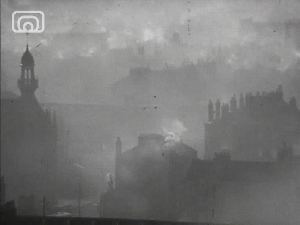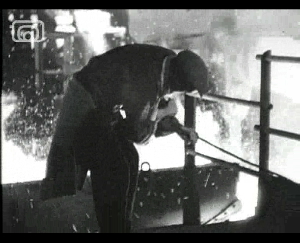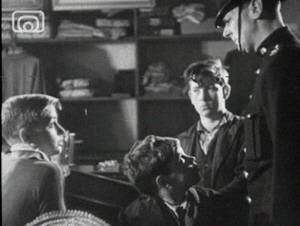Choice of Lens and Focussing
Lenses are used to change the audience's geometrical relationship to the field of view.
A long shot or telephoto shot from the film Health of a City.- Extreme long lenses of 200mm or more allow us to film from a great distance and compresses the visual field
- Long lens (a.k.a telephoto lens) – a lens of 85mm or more that compresses the visual field less obviously
- Regular 55mm lens – this lens is often used to give the viewer a feeling of objectivity since it most accurately mirrors the focal length of the eye
- Wide angle – a lens of 35mm or less that spreads the visual field and is often thought of as giving the viewer a more subjective relationship to the action
- Fish eye – an ultra-wide angle lens that distorts the visual field and gives it a surreal feel.
Focus
The depth of field - the area in the picture, from near to far, that is sharply in focus on a lens can also be adjusted to influence the way we read the action in a scene. It is worth noting that an additional key attribute that differentiates lenses one from another is the different depths of field they offer: wide angle lenses give deep focus, while long lenses have shallow depth of field.
Deep Focus - accentuates the character's relationship to his or her surroundings.
Shallow Focus - concentrates the audience's attention on a character's thoughts, or on characters’ developing relationship, or on an important detail.
Split Focus - where the focus prioritorises one character over the other.
An example of how shallow focus concentrates out attention on the action from the wartime film Children of the CityPull Focus - adjusting focus between characters refocuses the audience’s attention and allegiances.


